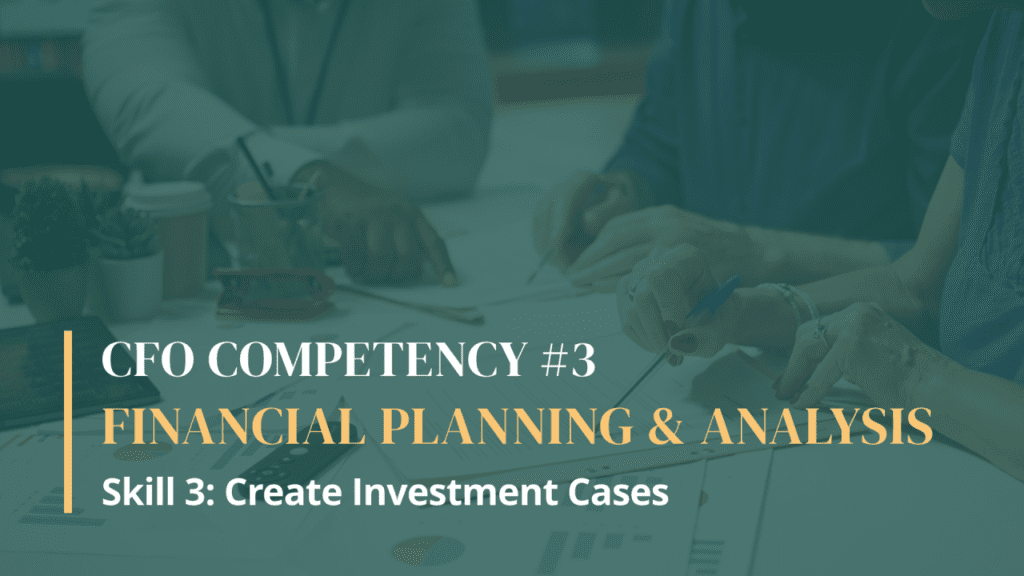Beyond Budgeting: How You Can Drive Dynamic Financial Planning

Table of Contents
In today’s fast-paced business environment, you are constantly facing changes. Markets fluctuate, your customers shift their preferences, and the economy experiences ups and downs. However, traditional budgeting methods struggle to keep pace, posing a significant challenge for your business. Rigid annual budgets, centralized decision-making, and an emphasis on predictability rather than agility have become significant obstacles to your organizational success. As the speed of change increases, you, as a finance leader, acknowledge the need to adopt a more dynamic, responsive approach to financial planning and management.
Enter “Beyond Budgeting,” an alternative framework that challenges the conventional budget-centric model and empowers you to succeed in the 21st-century economy. By removing traditional budgeting’s limitations, you can unlock the potential of continuous planning, align your financial strategies with changing business goals, and prepare your organization to confidently navigate uncertainty.
The Limitations of Traditional Budgeting
For decades, annual budgeting has been the cornerstone of financial planning for organizations of all sizes. However, as the business environment has become increasingly volatile and unpredictable, the limitations of this traditional approach have become glaringly apparent.
One of the primary flaws of traditional budgeting is its time-consuming and costly nature. After the month-end close, it usually demands the most of your finance team’s time and requires extensive involvement from the rest of your business. The process often involves numerous planning and approval cycles that can take months.
Allocating substantial resources to creating and enforcing strict annual budgets shifts focus away from more strategic initiatives and can impede your organization’s capacity to adapt to change. Furthermore, budgets frequently lack connection to your company’s overall strategy, failing to ensure the essential alignment between financial plans and broader business goals.
Another key issue with traditional budgeting is its tendency to obstruct change. Rigidly sticking to fixed budgets and targets can deter innovation, suppress creativity, and restrict your organization’s agility in response to market disruptions. Furthermore, the centralization of power inherent in traditional budgeting processes can hinder information flow and decision-making, preventing frontline employees from offering valuable insights.
The only certainty about the traditional budget is that it is bound to be incorrect. Your finance team spends a lot of time explaining the variances every month. However, there is typically only one reason for the variances: the budget no longer aligns with reality.
So, how can you improve?
Moving Beyond Budgets
There’s nothing new about the concept of beyond budgeting; it has been around for over 20 years, initially gaining prominence after the economic disruptions following 9/11. In the mid-2020s, that disruption hasn’t disappeared and perhaps has become more pronounced. You’ve experienced a global pandemic, followed by supply chain shortages, a war in Ukraine, rising energy costs, and the return of inflation and high interest rates. It’s simply not appropriate anymore to compile a list of budget assumptions a few months before the start of the financial year and use them to establish a budget for the entire year. At best, the assumptions might hold for Q1, but beyond that?
In contrast to traditional budgeting’s limitations, “Beyond Budgeting” offers a more dynamic and adaptable approach to financial planning and performance management. At the heart of this framework are two core principles: one focused on leadership and the other on management processes.
The leadership principles emphasize autonomy, purpose, and value-driven decision-making. They advocate for a culture of trust, empowerment, and transparency. This mindset shift empowers employees at all levels to contribute to the planning process, harnessing your organization’s collective knowledge and diverse perspectives.
On the management process side, Beyond Budgeting challenges the conventional budget-centric approach, promoting adaptive goal setting, dynamic resource allocation, and relative performance evaluation. Usually, this replaces the budget with a rolling forecast or a continuous planning process. This flexibility allows your organization to quickly respond to changes in the external environment, continuously aligning your financial strategies with evolving business needs.
Continuous planning is a cyclical, iterative approach that embraces change as a constant. Unlike traditional planning, which has a rigid, annual focus, continuous planning involves regularly reviewing and adjusting plans and budgets to reflect current realities, often quarterly or monthly. While you may still forecast the next 12 or even 18 months, you revise the plan during each review, incorporating new months or quarters, so it consistently looks forward by the same time span.
By embracing a continuous planning mindset, you, as finance leaders, can leverage the power of real-time data analysis, regular forecasting updates, and the flexibility to adapt plans in response to new information and emerging trends.
The Business Case for Continuous Planning
First, consider what your present process is costing you.
- How long do you spend putting the budget together from start to finish?
- How many iterations of the budget are there?
- How many people are involved? For what % of their time?
It takes a lot of effort to produce something that, by its very definition, is wrong. While you probably won’t be able to realize an immediate cash saving, you can redirect the team’s effort to much more valuable activities.
With continuous planning, grounded in the principles of Beyond Budgeting, you can use these resources to unlock a host of benefits for your organization:
Improved Agility and Responsiveness: By embracing a more flexible, iterative approach to financial planning, you can quickly adapt to changes in the market, customer preferences, or the competitive landscape. This agility allows you to seize new opportunities and mitigate potential risks more effectively.
Enhanced Strategic Alignment: Continuous planning strengthens the connection between financial strategies and your organization’s overarching business goals. By regularly reviewing and adjusting plans, finance leaders can ensure that resources are allocated in a way that directly supports the company’s strategic priorities.
Increased Cross-Functional Collaboration: The continuous planning process encourages collaboration across departments, breaking down silos and promoting a more holistic, integrated approach to strategy development. This cross-functional engagement leads to more comprehensive and well-rounded financial plans.
Empowered Frontline Employees: Beyond Budgeting principles, empower employees at all levels to contribute to the planning process, leveraging their frontline insights and expertise to inform decision-making. This bottom-up approach fosters a sense of ownership and engagement among the workforce.
Enhanced Decision-Making: Continuous planning, supported by real-time data analysis and regular forecasting updates, gives finance leaders the information they need to make more informed, data-driven decisions. Increased visibility and agility can lead to better resource allocation, improved risk management, and more effective strategic execution.Overcoming Change Resistance
While the advantages of continuous planning are compelling, transitioning from traditional budgeting to this more dynamic approach can be difficult. Organizational change often encounters resistance, and finance leaders must be ready to navigate these obstacles effectively.
One primary source of change resistance can be your organization’s deeply ingrained cultural norms and established practices. Cultural change is the most challenging change to implement. Employees may be comfortable with the familiar annual budgeting cycle and reluctant to embrace the increased uncertainty and flexibility inherent in continuous planning.
Finance teams need to have a very good understanding of the business drivers of cost, and as strategic decisions are made to stop certain activities and start new ones, then the costs behind the old activities can be stopped and funds redirected to the new. Such decisions don’t generally happen on an annual cycle; they are driven by reaction to the changing business landscape at any time during the year. You will likely still require spending budgets as part of your cost management process, but it’s likely you will need to have a mechanism to change these as strategic decisions are taken.
Investors may be wedded to the idea of an annual budget, and it may be really difficult to move them away from an annual business review. This can still fit a continuous planning cycle. Once a year, the latest rolling forecast can be used for this purpose.
Technology as an Enabler
While beyond budgeting isn’t a new concept, the emergence of new tools makes continuous planning a practical proposition. Advances in cloud-based financial planning and analysis (FP&A) solutions have significantly enhanced the feasibility and effectiveness of this dynamic approach.
Modern FP&A tools, such as Planful, offer essential capabilities for continuous planning, such as real-time data integration, flexible forecasting, and scenario analysis. These solutions empower your finance team to retrieve, analyze, and interpret relevant data rapidly, enabling them to make informed and agile decisions that align with your organization’s evolving needs.
Furthermore, integrating these FP&A tools with other enterprise systems, like enterprise resource planning (ERP) and customer relationship management (CRM) platforms, can enhance the visibility and accuracy of financial planning. By breaking down data silos and fostering cross-functional collaboration, technology can play a crucial role in the effective implementation of continuous planning.
AI will be a game changer, enabling rapid analysis of the vast amounts of data in these ERP and CRM systems and providing new insights that can be integrated into forecasts.
Embracing Continuous Planning: A Call to Action
As the business world evolves unprecedentedly, you, as finance leaders, must embrace a more dynamic, responsive approach to financial planning. With its rigidity and focus on predictability, the traditional budgeting model is no longer sufficient to meet the economy’s demands in the late 2020s.
By embracing the principles of Beyond Budgeting and implementing ongoing planning, you can position your organization for long-term success. This transition enables you to align financial strategies with changing business goals, leverage the collective knowledge and expertise of your teams, and confidently navigate uncertainty.
The shift to continuous planning may present challenges, but by tackling the human and technological facets of change, you can overcome inherent resistance and unlock the full potential of this dynamic approach.
As finance’s role evolves, you must embrace your position as strategic partners. You must guide your organization through the complexities of the modern business landscape. By embracing continuous planning, you can demonstrate your value as drivers of organizational agility, empowering your teams to thrive in the face of constant change.
Conclusion
As finance leaders, you need to rethink traditional budgeting processes in a world of relentless disruption. By embracing the principles of Beyond Budgeting and implementing continuous planning, your organization can unlock a new era of financial agility, strategic alignment, and organizational success.
As custodians of financial data and decision-makers, you are crucial to facilitating this transformation. By harnessing the power of continuous planning, you can prepare your organization to confidently navigate the uncertainties of the 21st-century economy and create a foundation for long-term, sustainable growth.







Responses